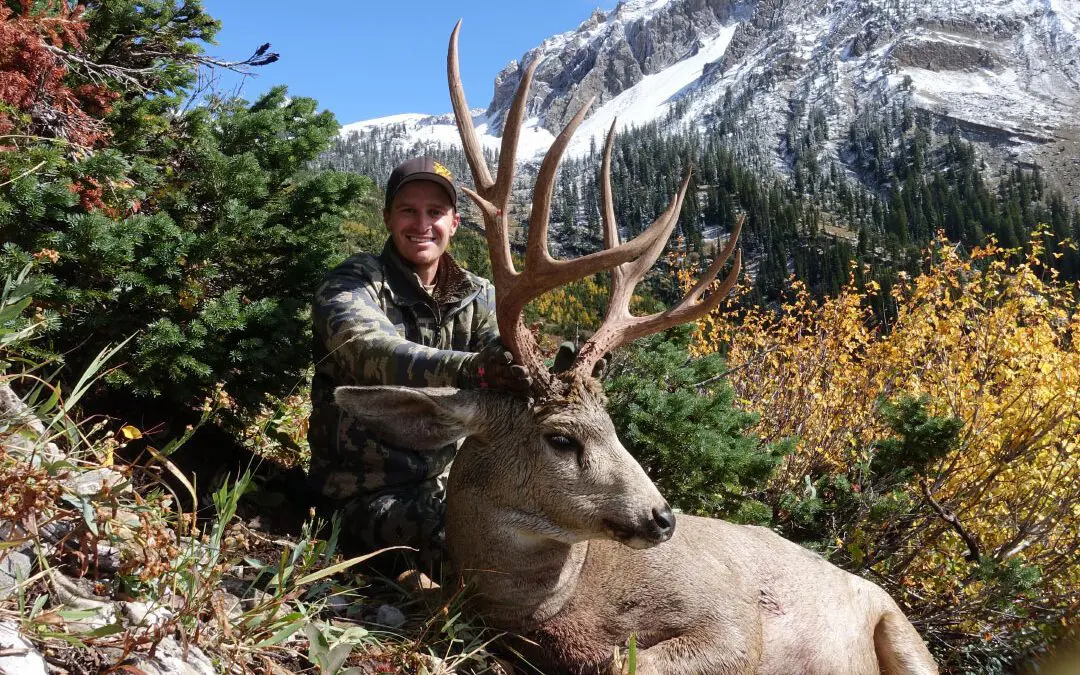To the top!” I said, grinning, when Jake asked where we were going while pointing nearly straight up to a spot where two giant peaks collide. For few such as us, this is where dreams of trophy bighorn sheep, elk, and mule deer begin.
Five hours later Jake Worthington and I lay motionless in our sleeping bags. Our bodies were spent, and, at least for the night, it was time for the tent walls to take the beating from the blizzard. As the pain in my legs began to fade away, my mind took over, recounting the events that had brought us to this situation.
We were above 9,500 feet, the trailhead more than 3,000 feet below. Six days earlier Jake had arrowed his first bull elk. But then a hunt years in the planning quickly crumbled into misery as we searched to recover that bull with no success. Frustrated in leaving his elk behind, we shouldered our backpacks, drove 100 miles, and death-marched five straight hours in the rain, mud, and snow to be here. Why? Maybe, it is part of an unfortunate need some of us have. The type where we subconsciously believe the harder we push ourselves and, ultimately, suffer, the more fulfilling the results will be. It just so happens that big mountains and high-country mule deer are the perfect catalyst for such needs to be met.
Unzipping the tent, I scanned the darkness with my headlamp. It was early, 5 a.m.; the snow and wind had stopped. Our boots were stiff; backpacks, food, and clothes were all frozen. We jockeyed for position in the cramped, ultra-light mountaineering tent as we packed our ice-covered clothes into our sleeping bags to thaw, mustering the guts to put them on. Five fresh inches on the ground and no sun added to the bitter cold. Adjacent to us, the deep canyon walls would require two or more hours for the rays to hit.
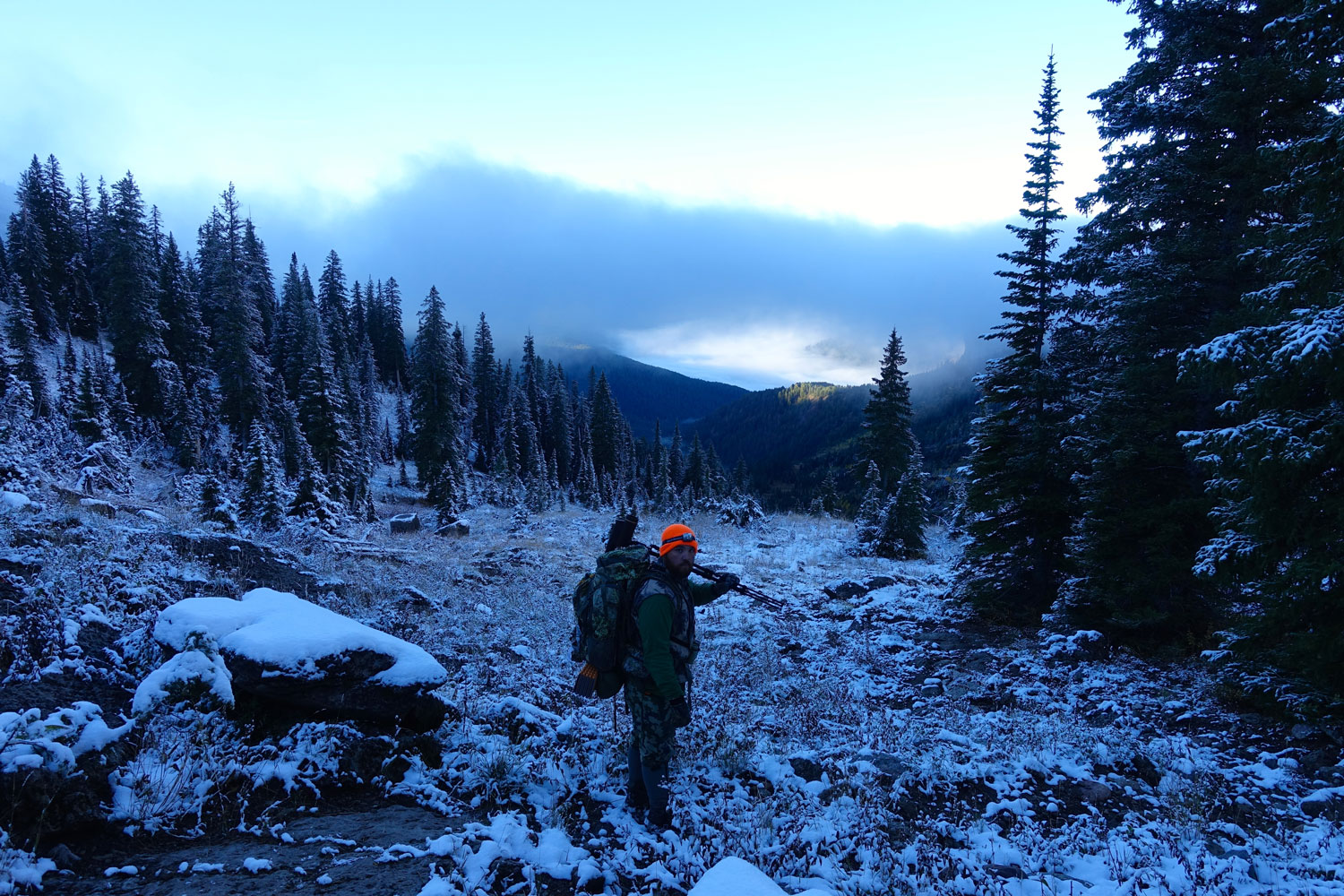
The weather had in most respects beaten us. Our only shot was going to be hunting our way back to safety. As the canyon grew brighter, we lifted our packs while simultaneously glassing and walking down the mountain. Incredibly, within 20 minutes I spotted a deer across the rock crevasse that we had paralleled on our ascent. He lived beyond the canyon, with rock walls on both sides standing guard over a pure sub-alpine creek flowing 60 feet at its base. Bedded, he was protected by a couple of large pines and backed against an impassible 100-foot rock wall.
I knew we had to get a better look and quickly deployed my tripod with spotting scope. It was apparent the deer was mature, though more than a half-mile away. Quickly, I ran through my mental checklist. Where was the wind? The sun? And how could I possibly cross the gaping canyon to get within range?
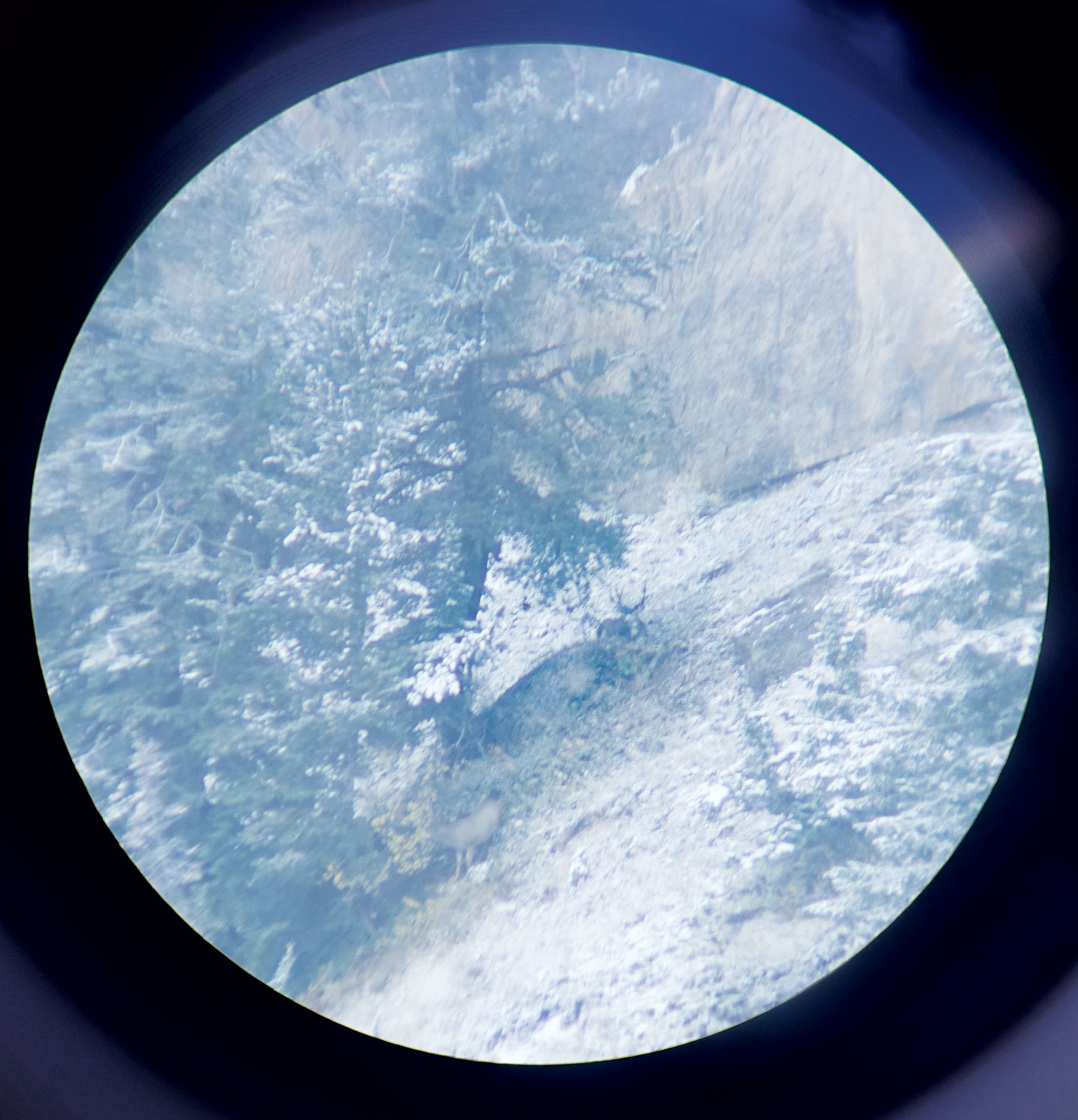
On their walk out, the hunters stopped occasionally to scan the mountainside. Using a camera mounted on his spotting scope, Layman photographed the big mule deer he would ultimately stalk and kill.
Jake took over the spotting scope while I prepped my pack and checked my rifle, to my horror finding that the rain, which turned to snow the night before, had formed ice inside the barrel. I tore into my pack and pulled out my field-cleaning kit. With no other choice, we were forced to shove small sticks into the muzzle, fishing the shoelace-type bore cleaner through to clear the barrel. Relieved, I refocused on our plan. I would follow the canyon rim down to the buck’s elevation, traverse the canyon between us, and kill the buck. All this before the sun exposed me.
Nearing the edge of the canyon, I searched for a possible way to cross. Sliding most of the way while holding onto trees, roots, and rocks, I made my way down the 60-foot wall to the canyon floor. I arrived at the creek that ran clear and pure through the bottom and quickly unpacked my purifier to pump some fresh water; in these elevations it’s as scarce as big deer.
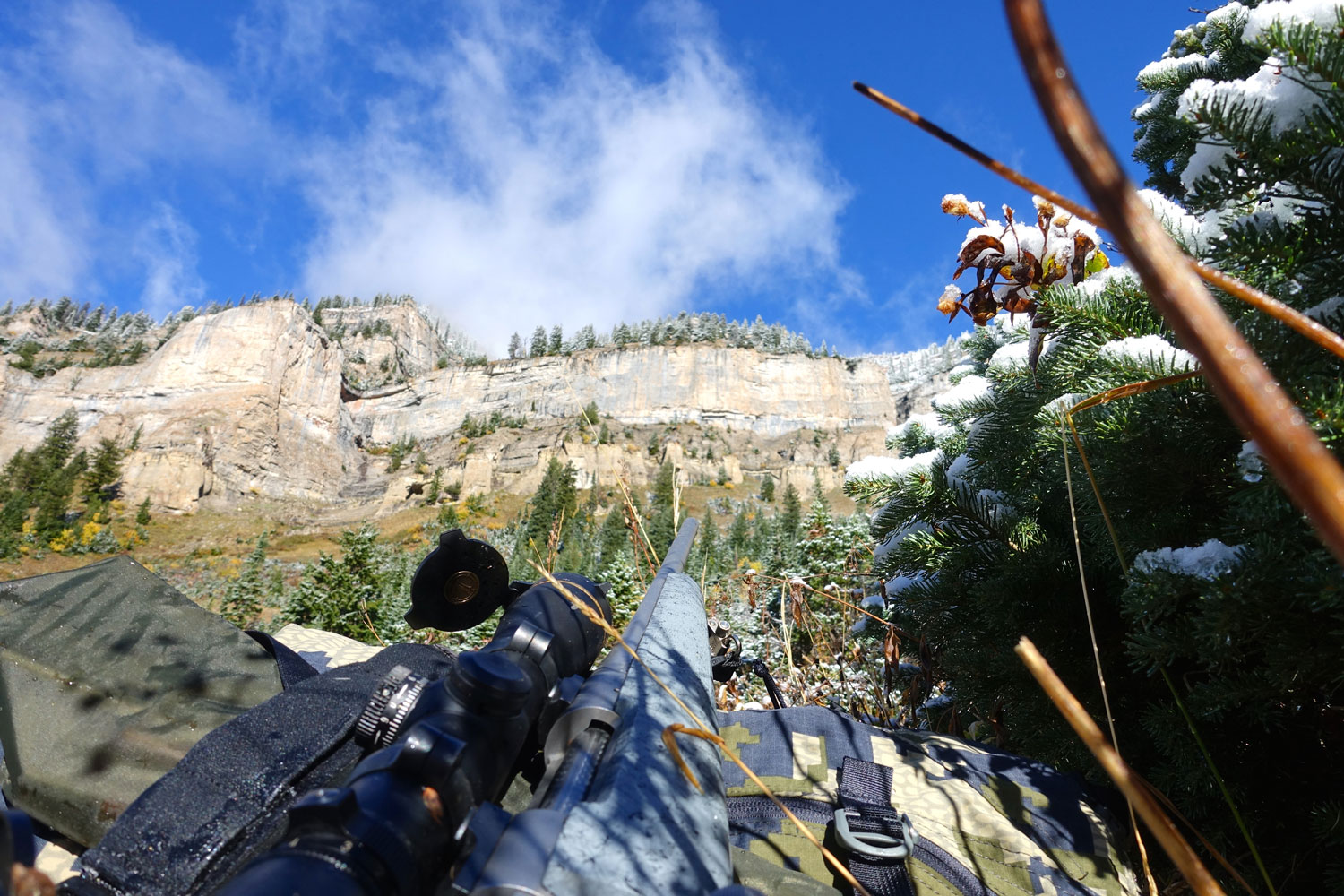
I began making my way up the other side of the canyon only to meet with thick, head-high brush. Finding myself in the last secluded vantage point to the two pines, I began preparing for any opportunity I might have to take a shot.
My pack acted as my rest, with my right elbow wedged into a boulder for stability. I could feel the snow under my stomach melting into my already-soaked clothes. Just as I began to shiver, the canyon lit up like wildfire, the heat first hitting the back of my legs, then swiftly engulfing my whole body. Sunrise has a way of sparking the spirit, and I felt rejuvenated.
Finally the buck rose from his bed, more than 310 brutally steep yards away. He stood facing my left and dead broadside, his body lit up against the sheer rock wall. Sounds faded away, my breathing slowed, and my vision narrowed. My finger squeezed the trigger with immense intent. Craaack! The .25-06 recoiled into my shoulder and my eyes rose above the scope. The deer took two steps on the loose rock and began to tumble, falling head over heals, over and over.
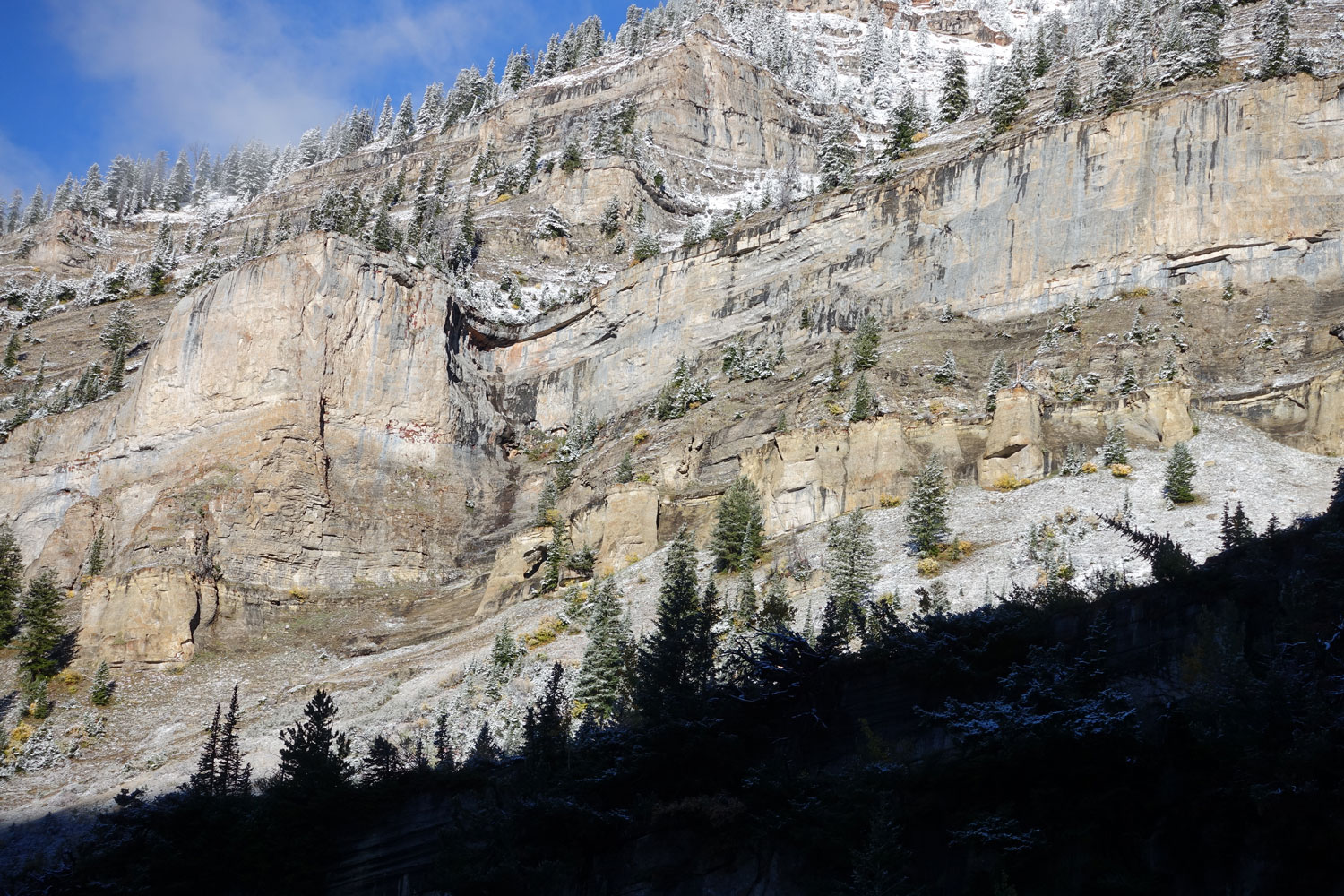
Some 50 yards down the mountain the buck momentarily regained his feet, and I squeezed off another round.
Craaack! The canyon walls echoed and rocks rattled loose. Again the buck went head over heals, tumbling toward me down the immense rockslide, then finally coming to rest just out of sight in the tall mountain brush.
As I sat next to my buck, trying to catch my breath in the sunshine, I could hear Jake’s bursts of excitement as he closed the distance. The deer was beautiful—bases nearly as thick as your wrist, forks so deep and symmetrical it seemed his tall frame was reaching for the sky, and two extra points shooting off each side for added character.
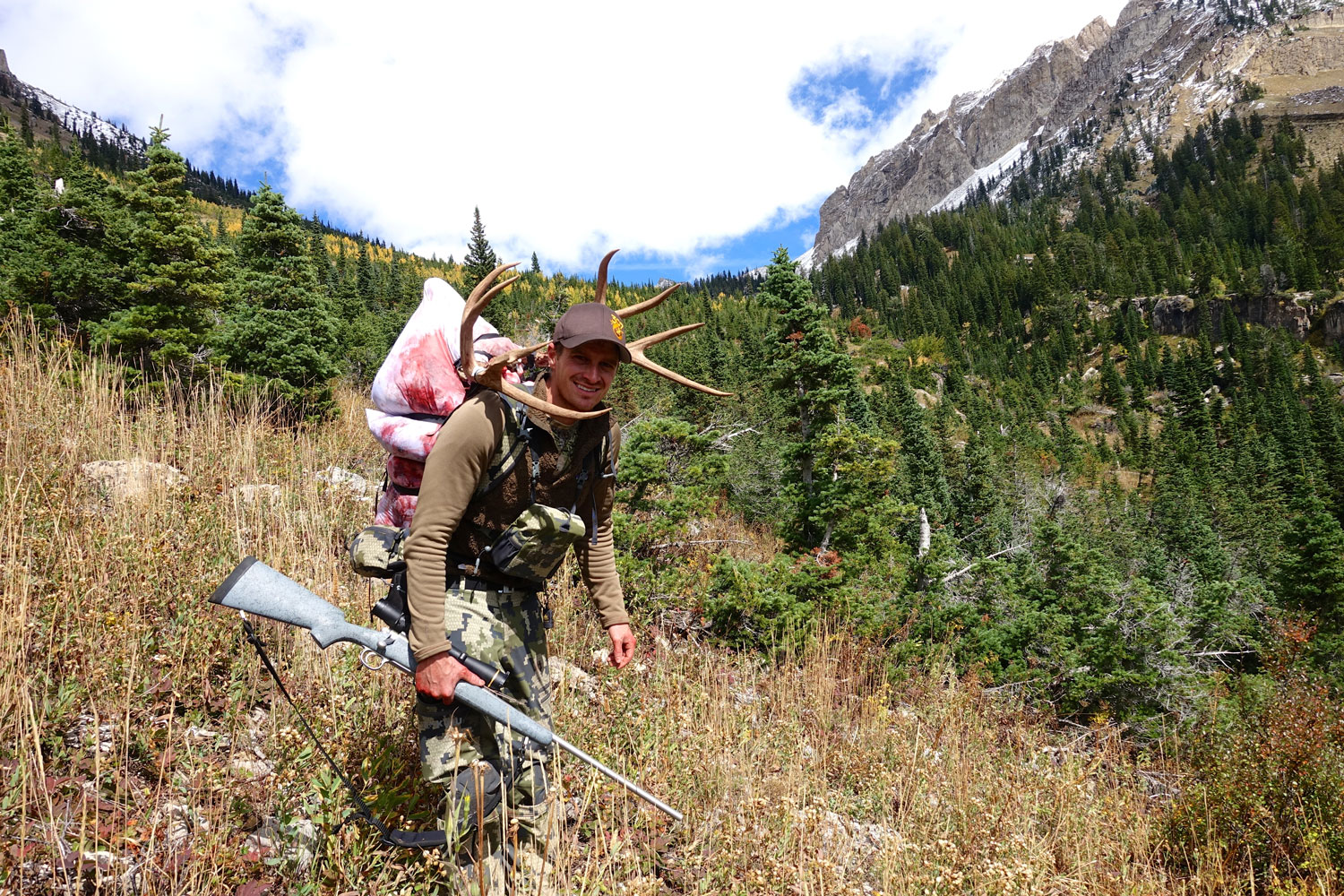
High fives and hugs ensued. We spent the next several minutes in silence, reflecting upon the true cost of taking such a magnificent animal in such rugged terrain and such dreadful weather. In times like these physical strength will only get you so far. The mind has to be equally strong, if not stronger.
I unpacked my camera and grabbed my tripod. Jake laid out our remaining wet clothes in the high mountain brush to dry while we prepared for field photos. The mountain struck a pose for us in spectacular fashion.
We processed the beautiful buck and packaged the meat into game bags. Jake took a front and hindquarter, along with the backstraps and tenderloins. I lashed the cape and rack to my pack with the remaining front and hindquarter. Jake helped me to my feet, and we continued our descent from the top.

